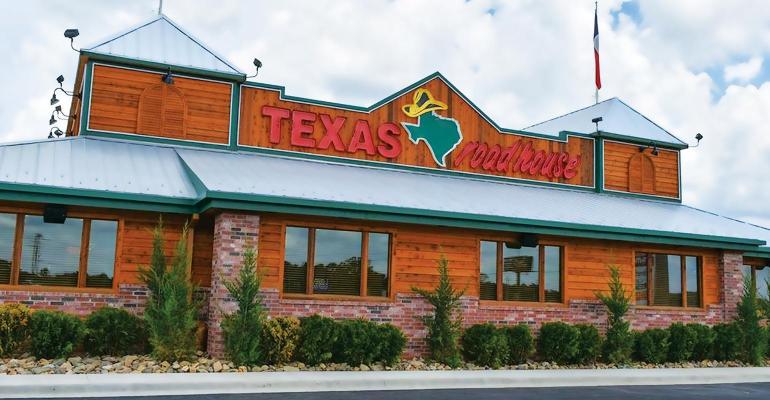Customers continue to flow liberally into Texas Roadhouse restaurants. During its Q2 call Thursday after the market closed, the Louisville, Ky.-based chain reported nearly 5% traffic gains in the second quarter.
This helped drive a 9% same-store sales increase and an average of $147,000 in weekly sales. These trends have continued into the early innings of Q3, executives said, with comp sales up by 10.7% so far.
“We are pleased with our strong sales and profit growth in the second quarter,” CEO Jerry Morgan said on the call. “There is no doubt that our guests continue to support our commitment to serving made from scratch food in a fun and friendly atmosphere.”
The chain is riding over 10 years of positive traffic patterns, but that’s not to say things have been easy of late. Second quarter restaurant margin as a percentage of total sales decreased by 88 basis points to 15.7%, for instance, while food and beverage costs were 37 basis points higher than last year. Beef and labor costs are pronounced challenges, as investor relations head Michael Bailen outlined on the call.
“We have seen marginally more wage pressure in the first half of the year than we originally contemplated,” he said. That pressure came from added hours to manage higher volumes, and also payroll taxes stemming from higher wages and hours.
Morgan added that there has also been some investment on labor to ease managers’ hours and ensure a better “quality of life” for them. And, the company continues to rebuild from being understaffed last year.
“Our labor hours are growing as we feel very good about our staffing right now,” Bailen said.
On the commodities side, beef remains the primary driver of inflation and Bailen said it has the potential to be a pressure point again next year. According to the Wall Street Journal, beef costs have risen due to a shrinking supply of cattle, drought, and pandemic disruptions. The number of cattle in the U.S. is at its lowest level in nearly a decade. If this pressure continues, the company may adjust pricing.
“It’s the cost of doing business right now. We need to be very cautious and careful on the pricing to make sure we are continuing to drive our value component and deliver on experience,” Morgan said.
“We’ve been conservative. We will probably stay in that direction, but we have also proven if we need to, we can use that leverage.”
Contact Alicia Kelso at [email protected]

